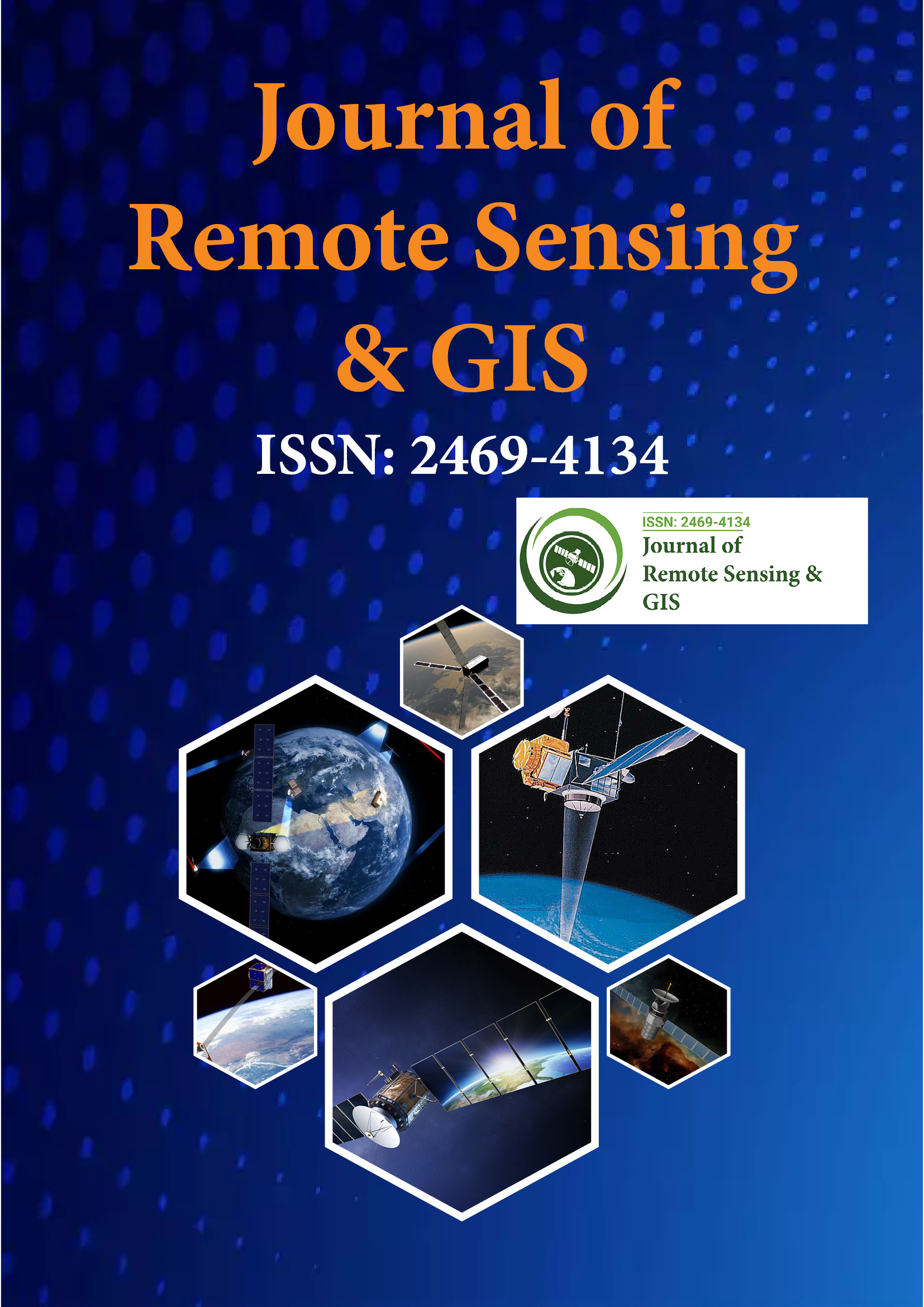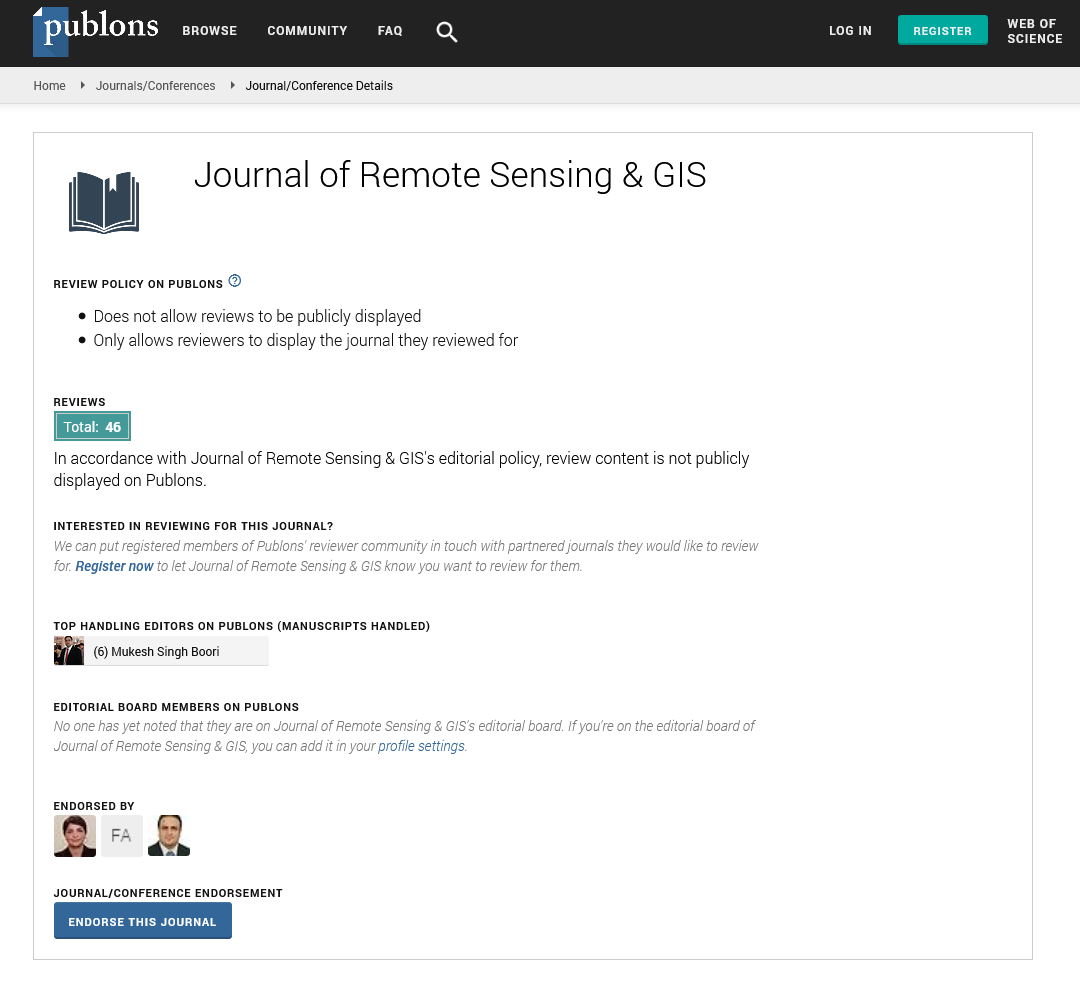Indexed In
- Open J Gate
- RefSeek
- Hamdard University
- EBSCO A-Z
- OCLC- WorldCat
- Publons
- International Scientific Indexing
- Euro Pub
- Google Scholar
Useful Links
Share This Page
Journal Flyer

Open Access Journals
- Agri and Aquaculture
- Biochemistry
- Bioinformatics & Systems Biology
- Business & Management
- Chemistry
- Clinical Sciences
- Engineering
- Food & Nutrition
- General Science
- Genetics & Molecular Biology
- Immunology & Microbiology
- Medical Sciences
- Neuroscience & Psychology
- Nursing & Health Care
- Pharmaceutical Sciences
Long-term spatio-temporal analysis of seawater intrusion for sustainable ground-water management in Bhavnagar District
2nd International Conference on GIS and Remote Sensing
October 02-03, 2017 Vienna, Austria
Arun B Inamdar, Mugdha Apte and Yogesh Agarwadkar
Indian Institute of Technology Bombay, India
Posters & Accepted Abstracts: J Remote Sensing & GIS
Abstract:
Fresh groundwater constitutes of 0.76% of total available water on the earth, which is 30.1% of available fresh water. 40% of global population resides within 100 km of the coastline, utilizing mainly the groundwater as their primary source of freshwater. The coastal fresh water aquifers are stressed due to overexploitation and contamination. Due to overexploitation in coastal zones, seawater intrusion has come up as a major challenge in developing countries like India. The aim of this work is to help the resource managers and policy makers understand the stress on groundwater and carry out sustainable groundwater management. The analysis will prove to be an useful tool in prioritizing mitigation measures for improving the health of coastal aquifers. The current work focuses on assessing the change dynamics of seawater intrusion in coastal aquifers of Bhavnagar District, Gujarat, India; located on the Gulf of Kutch. Gulf of Kutch faces highest tidal variation (11m) in India, which makes seawater intrusion a serious threat to Bhavnagar coast. The spatio-temporal analysis is carried out to understand the qualitative and quantitative variation in groundwater. These variations are studied with respect to rainfall dynamics and local soil conditions to understand the severity and extent of seawater intrusion. The parameters analysed are groundwater quality (chlorides, carbonates, Electrical Conductivity), groundwater level, rainfall data and soil parameters. Long-term trends of these parameters are analysed and compared to understand the spatio-temporal variation in seawater ingress. It is observed from the current analysis that Vallabhipur, Bhavnagar, Talaja and Botad were the severly affected talukas.
Biography :
Arun B Inamdar received his PhD degree in Geology from IIT Bombay in 1986. He is currently the Professor at CSRE, IIT Bombay. His current research interests are: application of remote sensing and GIS to ICM and climate change studies; coastal vulnerability studies along Indian coastline, LU/LC monitoring through satellite remote sensing.

